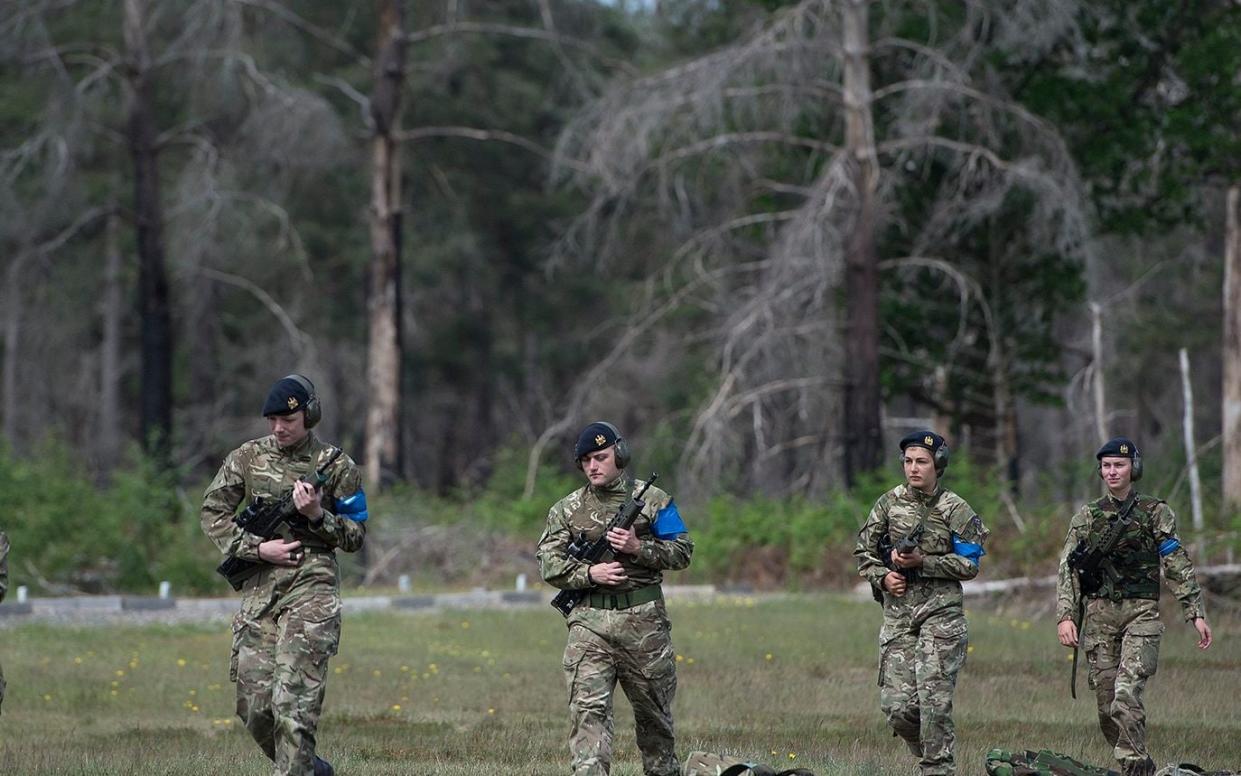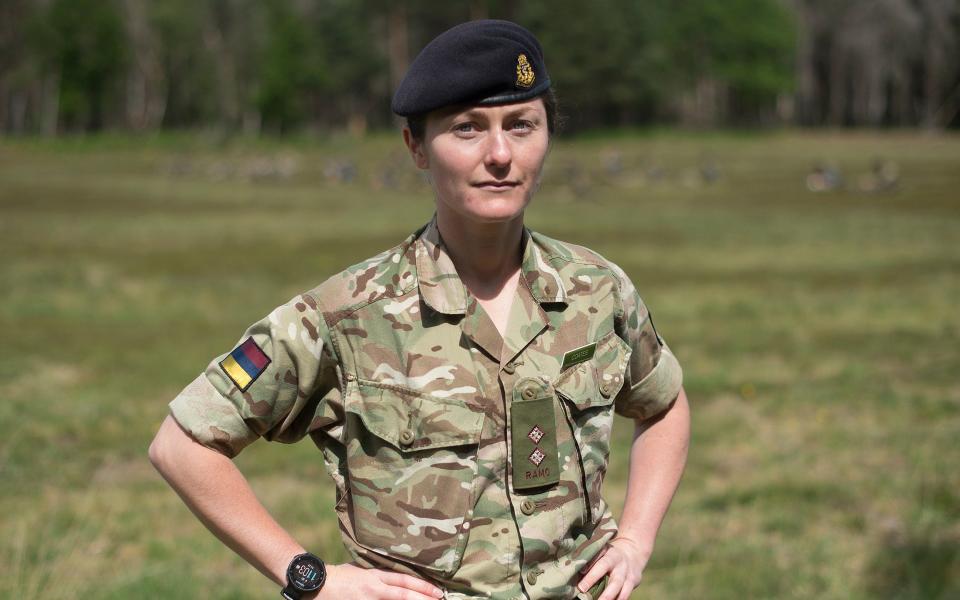Army rifle training 'takes three times as long' because weapons cannot be inspected while being held

Army rifle training for recruits now "takes three times as long" because weapons cannot be inspected while they are being held, an instructor has revealed.
Lieutenant Roma Coates, who has been an instructor at the Army Training Regiment, Pirbright, since May last year, said training recruits under the new social distancing measures was “bizarre when you compare to how things were before”.
“It’s much more time consuming,” Lt Coates, 27, told The Daily Telegraph.
Lt Coates, of the Royal Army Medical Corps, explained that since her recruits had returned after the Army’s basic training program restarted earlier this month, they were being trained in weapon handling.
Whereas previously she would “have been able to stand by the recruit and examine how the gun had been loaded,” which would have required her “to get close, check weapon chambers, make sure nothing can be accidentally fired off”, this is now all done with 2 metre distancing in place.
During the current training the recruit places the weapon on the ground with the chamber open, before stepping back.
“Then the safety staff checks the weapon and then steps back and the recruit returns to pick up,” she said.
“It takes three times as long in reality.”
However Lt Coates remained optimistic about the Army’s ‘new normal’.
“For us it’s just another step of constraints that we have to work with,” she added.
“Institutionally we are a disciplined industry. In military life, you have an instilled mental resilience, you understand what is expected of you.”

She cautioned that the concept of social distancing fatigue was not something the Army would allow to happen.
Meanwhile, Ben Cann, who like Lt Coates is of the Tobruk Platoon, has returned to Pirbright after being sent home during lockdown for seven weeks and said there had been “a lot of changes”. While at home he continued training through an online portal with work set by his platoon commander. There were also Zoom calls and physical activities, including running and body weight exercises, set by a personal trainer.
Mr Cann, who is in the process of joining the Royal Electrical & Mechanical Engineers as an Aircraft Technician, revealed that recruits now use dummies when they attend lessons on battlefield casualty drills.
“We normally practice on each other and put on bandages,” Mr Cann, 31, explained.
“Now we use dummies which are cleaned after each person has used them.”
He also said that when recruits returned to Pirbright just over a week ago they were screened when they first arrived in order to check for symptoms before adopting an armband system.
Recruits who showed no coronavirus symptoms were given a blue armband, which is to be worn for two weeks. Recruits who continue to display no symptoms will then be given a green band, however those who do present symptoms will be given a red band and put into isolation.
Other changes at the training regiment include the way meals are taken. Whereas before recruits would all sit with 15-20 people at tables in long rows, the tables have been separated out in order to seat one person per table.
It comes after a number of military training centres were closed in March due to the coronavirus outbreak. Recruits and Officer cadets who returned to Sandhurst Royal Military Academy at the weekend were informed that they would be operating as a “gated community” and no longer allowed home at weekends.
James Heappey, the Armed Forces Minister, said his “justification” to recommence training before lockdown restrictions have been lifted was so that the military could be prepared for “things that we know we are going to need in six months' time, in a years' time”.

